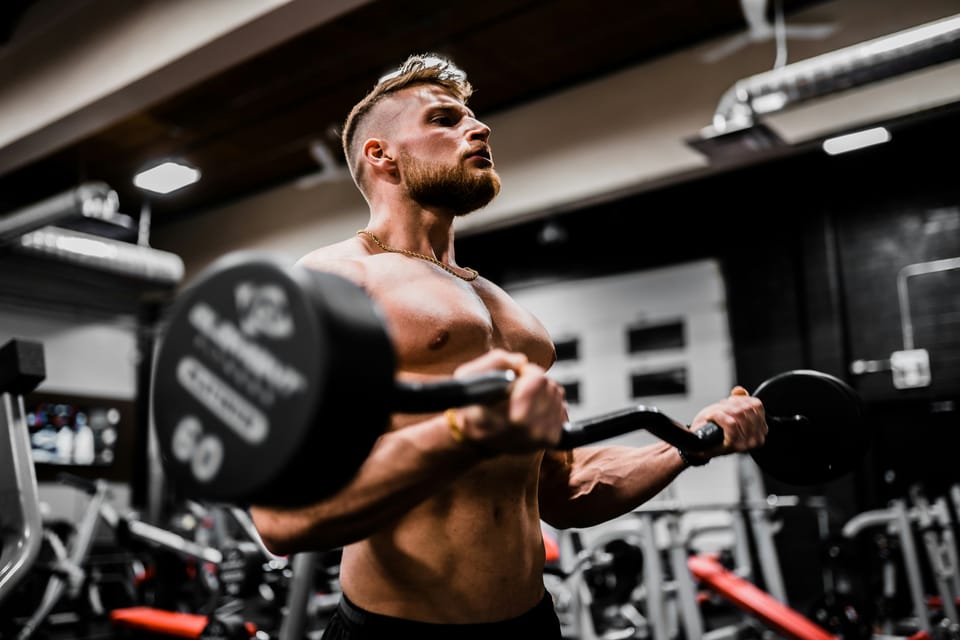💪 High Reps vs. Low Reps: Which One’s Actually Better?

It started with a biceps curl.
Well, actually, it started with me side-eyeing a guy doing biceps curls with what looked like two paint cans. Meanwhile, I was over here trying to curl a small car—and wondering why my elbows hated me the next day.
Welcome to the eternal gym debate: Should you lift heavy with low reps, or go light with high reps?
It’s one of the most confusing questions for gym-goers, whether you’re brand new or have protein powder in every bag you own. So today, we’re breaking it down—science-style, story-style, no BS-style.
🧠 Let’s Start With the Science
When you lift weights, you’re doing more than grunting and sweating (although yes, that too). You’re triggering specific adaptations in your muscle fibers—and the number of reps you do actually changes which type of fibers get activated.
Here’s how it breaks down:
Low Reps (1–6 reps):
- Heavy weight (typically 80–90% of your one-rep max)
- Targets Type II (fast-twitch) muscle fibers
- Boosts maximum strength and neural efficiency
- Common in powerlifting and strength programs
🧪 Source: Journal of Strength and Conditioning Research, 2017
Moderate Reps (6–12 reps):
- Moderate weight (60–80% of your 1RM)
- Best for hypertrophy (a.k.a. muscle growth)
- Stimulates both Type I and II fibers
- Known as the “sweet spot” for aesthetics
🧪 Source: Schoenfeld, Brad J., “The Mechanisms of Muscle Hypertrophy,” NSCA, 2010
High Reps (12–20+ reps):
- Lighter weights (less than 60% of your 1RM)
- Trains Type I (slow-twitch) endurance fibers
- Great for muscular endurance, joint health, and metabolic burn
🧪 Source: ACSM Guidelines for Resistance Training, 2014
So... which is best? Depends on your goal.
🎯 Goal-Based Cheat Sheet
Let’s play a little game of “What’s Your Training Persona?”
🏋️ “I want to get STRONG”
You want to lift like Thor and open pickle jars like a god.
➡️ Go for low reps (1–6) with longer rest periods (2–4 min).
💡 Focus on compound lifts: squats, deadlifts, bench press, overhead press.
Bonus tip: It’s less about volume, more about intensity and form.
💪 “I want to look jacked / toned”
You're chasing that “my shirt just fits better” vibe.
➡️ Moderate reps (6–12) are your best friend.
💡 This rep range causes the most mechanical tension and metabolic stress—the two key ingredients for muscle growth.
Bonus tip: Include drop sets or supersets to add intensity.
🧘♂️ “I want to stay lean, fit, and pain-free”
You care more about stamina, joint health, or are coming back from injury.
➡️ Stick with high reps (12–20+) using controlled form.
💡 Great for isolation exercises, bodyweight movements, or circuit-style training.
Bonus tip: Keep rest short (30–60 seconds) for a cardio boost.
🤯 Wait… Can You Really Build Muscle With High Reps?
Short answer? Yes.
Long answer? Also yes—but there’s a catch. You have to train to fatigue. That means those 20 reps better burn, not feel like a casual stroll.
A 2016 study by Brad Schoenfeld found that as long as volume is equated, both high-rep and low-rep training can result in similar hypertrophy.
🧪 Source: Journal of Applied Physiology, 2016
So yes, your grandma’s pink dumbbells could grow muscle—if you did 30 reps to failure (and grandma doesn’t need them back).
⚖️ What About Fat Loss?
Fat loss is more about calories burned and nutrition than reps. That said, high-rep training tends to create more metabolic demand, which can help with calorie burn. But building muscle with low/moderate reps actually raises your resting metabolic rate, helping you burn more fat long-term.
TL;DR: Don’t chase “toning.” Chase strength + consistency. Fat loss will follow.
🧪 Source: International Journal of Sports Physiology and Performance, 2018
🔄 Why Smart Lifters Mix Both
Here’s a little secret: the best training programs don’t pick sides. They cycle through different rep ranges to stimulate new adaptations and avoid plateaus.
It’s called periodization, and it looks something like this:
- Week 1–3: Strength focus (3–6 reps, heavy)
- Week 4–6: Hypertrophy block (8–12 reps, moderate)
- Week 7–9: Endurance/metabolic phase (12–20 reps, light)
That’s how athletes train. That’s how your body evolves.
🛠️ Final Takeaway: Choose Your Reps Like You’d Choose a Playlist
Some days call for hype music and deadlifts.
Other days? Chill beats and bodyweight lunges.
The magic is in the mix:
- Low reps = raw power
- Moderate reps = sculpted muscle
- High reps = endurance + burn
Just make sure you're showing up consistently, progressing over time, and leaving the ego at the door (along with the gallon jug of water).
P.S. Your reps matter—but your form, recovery, and nutrition matter more. Don’t overthink the numbers. Just get in, lift smart, and trust the process.
Train well,
Harper Blythe🏋️♀️